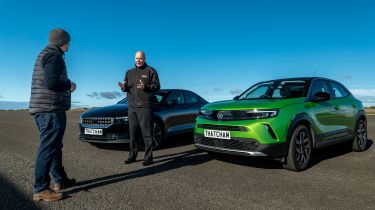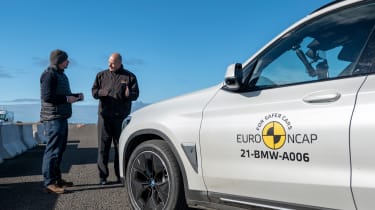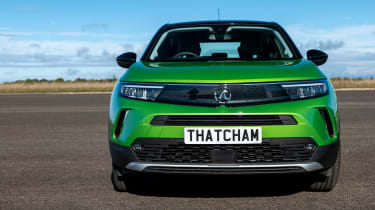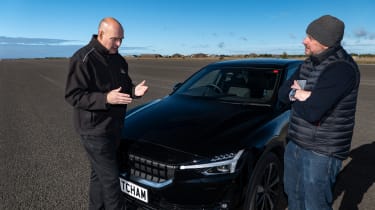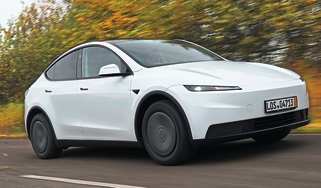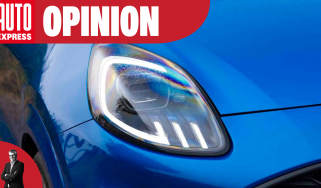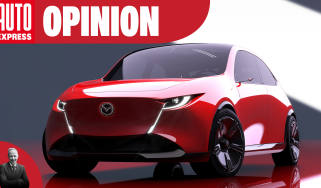Advanced Driver Assistance Systems: how ADAS car tech is put to the test
Euro NCAP tests will soon include scoring of driver-assistance systems, and Thatcham Research, the UK’s only Euro NCAP accredited partner, is leading the research
As long as there have been cars, people have been looking to a future where we’ll be driven. Electronic chauffeurs, if you like, or self-driving cars, but there’s presently no such thing, outside of a few highly experimental and heavily governed robotised taxis.
Driving is incredibly complex, though, and having a machine take over that task isn’t straightforward. “It’s the last 10 per cent of what we do when we’re driving that machines are really bad at,” says Matthew Avery, Director of Research at Thatcham Research. The sort of stuff you, as a driver, take in your stride; be it roadworks, an unusual roundabout or perhaps a horse and rider on the road. A human can work out what to do, but it’s all but impossible to write a rule that a machine can follow when dealing with unique events.
Avery and his Thatcham Research colleague Colin Grover, Principle Engineer – Automated Driving, are quick to point out that there is no such thing as a self-driving car to buy today, regardless of what you might have heard or been led to believe. Grover’s job title includes it, but they’re not even particularly keen on the term “automated driving”, instead preferring “assisted driving” in relation to the systems offered on current cars.
That is one of many challenges safety body Euro NCAP and Thatcham Research face as they set out to categorise and test such systems, because car manufacturers are in a technology arms race to bring levels of “autonomy” to market. Claims have been spurious and overhyped, leading drivers to believe they’re more capable than they actually are, with sometimes disastrous consequences. “Automation is brilliant, but if it’s automation that annoys you, or you’re over-relying on it because you trust what you’ve been told, that’s horrendous,” says Avery.
Thatcham Research, working in partnership with Euro NCAP, is testing to a set of protocols that Thatcham has developed. It wants systems to be scientifically rated, thus allowing consumers to better understand what they do, and to compare how well they do it.
The most widely accepted grading of automation covers six different levels. Level 0 is considered no automation of driving tasks, although there may be systems to help the driver, like an emergency braking system, that help in the event of an accident.
Level 1 is the lowest level of actual assistance. Vehicles in this category feature a convenience feature such as cruise control or adaptive cruise, where the driver is still required to do things such as steer and brake, but the car is able to maintain a set speed.
Underlining the relative infancy of the technology is the fact that presently we’re in a world where a Level 2 “partial automation” car is all you can currently buy, and it still falls well short of what can genuinely be described as automation. Hence Thatcham Research’s preference for the term “assisted”. Level 2 covers systems like Advanced Driver Assistance Systems (ADAS), where, in certain situations the vehicle can control steering, acceleration and deceleration, although a human is required to be in the driver’s seat and can take control at any time.
Level 3 takes that a step further, where the car can undertake most driving situations, although it would still require a human to intervene if necessary. This middle ground is one that’s perplexing engineers and legislators, because human nature dictates that if you remove the need to perform tasks, then people will become distracted and not bother monitoring what’s going on. So when and if a driver needs to take over, they won’t be prepared to. Some manufacturers have cars that technically are Level 3-ready, but the legislation is trailing the technology in most cases, so, as yet, outside of a few areas it’s not able to be used.
Avery and Grover suggest a leap from Level 2 straight to Level 4 would be preferable, because with Level 4 the car can drive itself in particular circumstances. To do so it would need to be geofenced, allowing its high level of automation to work only within particular areas. Level 5 above that is full automation, and is as unambiguous as the classifications get, because here any people in the car are passengers only, with no requirement to undertake any driving tasks.
Until Level 4 and above exists, the goal is to make sure the systems currently offered do the best possible job. Statistics show that 25 per cent of people killed or injured on UK roads are the result of cars leaving their lane, coming off the road, hitting a static object or entering another lane and hitting another vehicle. Lane Keeping Assist technology helps to mitigate that, and is now a relatively familiar feature on current cars.
Last year, Thatcham and Euro NCAP began testing and grading Level 2 assistance systems, creating a framework that can be used to understand what they’re capable of and how good they are in relation to rivals. They’ll be revealing the first results soon, and in time these will be incorporated into the familiar Euro NCAP star ratings.
Grover explains: “One of the key things is the concept of balance,” adding: “We look at three main areas, Vehicle Assistance, that’s what can the car do? Then there’s Driver Engagement, how is the driver kept engaged in the process, and Safety Backup, how the systems work if there are any failures with sensors, or there’s an unresponsive driver.” The balance aspect is crucial, because while Level 2 cars assist more, there’s a need to retain the driver’s attention for when they’re needed to take over. “Our scoring system takes that into account, so it doesn’t matter how top drawer your driver-assistance system is; if it’s not balanced by engagement, then it won’t score highly,” says Grover.
Before any actual testing is undertaken, Thatcham Research looks at how the technology is communicated to drivers. “We look to see what information is in the vehicle handbook, or a quick start guide that’ll help you understand these systems. We even check how they’re described in marketing and promotional material to make sure they’re not incorrect,” says Grover. That’s important, because there are many instances where a system’s name suggests capabilities far in advance of what they’re actually capable of.
Only then does Thatcham Research undertake physical testing of the systems, starting with how easy they are to operate, and how the vehicle shows a driver how it’s supporting them, because that’s not always obvious. “We look at how well the Active Cruise Control functions, how the steering support system functions, how does it guide you down the lane while driving and how it reacts to changes in the environment and speed limits. The driver-monitoring element is how the car measures that you’re still active in the process, that you haven’t yet taken a step back and put your feet up. And then the driving collaboration part, the feel of it at the end of the day, how does it feel to be working with these cars?” says Grover.
Necessarily, they also test redundancy, whether the systems are active if the sensors or cameras aren’t working, be it due to a technical fault or simply dirt, snow, or water obscuring them. That’s crucial, because, as Avery describes: “the paradox with that is if you ask most drivers where they would want these systems they say, ‘I want the help in fog rain, snow, bad weather, that’s when I’m nervous’, so it’s no good the system saying ‘it’s raining, sorry, no system’.”
Putting that all into practice on Thatcham Research’s test track is a team of testers and engineers who try these systems in a controlled environment. We try three different cars, a Tesla Model 3, BMW iX3 and Polestar 2, each using different approaches to driver assistance. We’ll not highlight which did better or worse, because we’ll be sharing the results when they’re published, but it’s enlightening to drive each car and feel how differently they cope with the same scenarios.
There are different efforts required to move the steering wheel while lane assist is working, and while Thatcham Research is able to accurately measure this for its testing, it’s obvious just trying out each car ourselves. Likewise how each car reacts when road markings change, or there’s an obstruction ahead, and how each gives the driver a nudge if they’re not engaged in the driving process. To test for redundancy there’s the possibility to cover cameras and sensors, too, to see how the car responds, and how its status is communicated to the driver.
Simplifying a complicated set of data for the public means we’ll see four gradings of Entry, Moderate, Good and Very Good. Entry is where a car features basic active cruise control and lane centering, or where the system’s performance is imbalanced between Vehicle Assistance and Driver Engagement, with limited safety back-up within the system. Moderate grading is where there’s greater safety back-up from the systems, or also cars where there’s better performance in the assistance, but they don’t perform so well in Driver Engagement. The Good category sees the assistance systems working well, with good Driver Engagement and a good safety back-up. Above that, Very Good-rated systems are state-of-the-art, with the ability to give excellent support and engagement, as well as providing high levels of safety back-up in challenging situations.
We’re all capable of mistakes, but Thatcham Research and Euro NCAP’s testing means you can make an informed decision as to how well a car might react, and perhaps save you from them. We’re a long way away from cars driving themselves, but thanks to these gradings, the journey should be easier to understand. And if you pick a car with a Very Good rating, it should be as effortless and safe as possible.
Find a car with the experts
